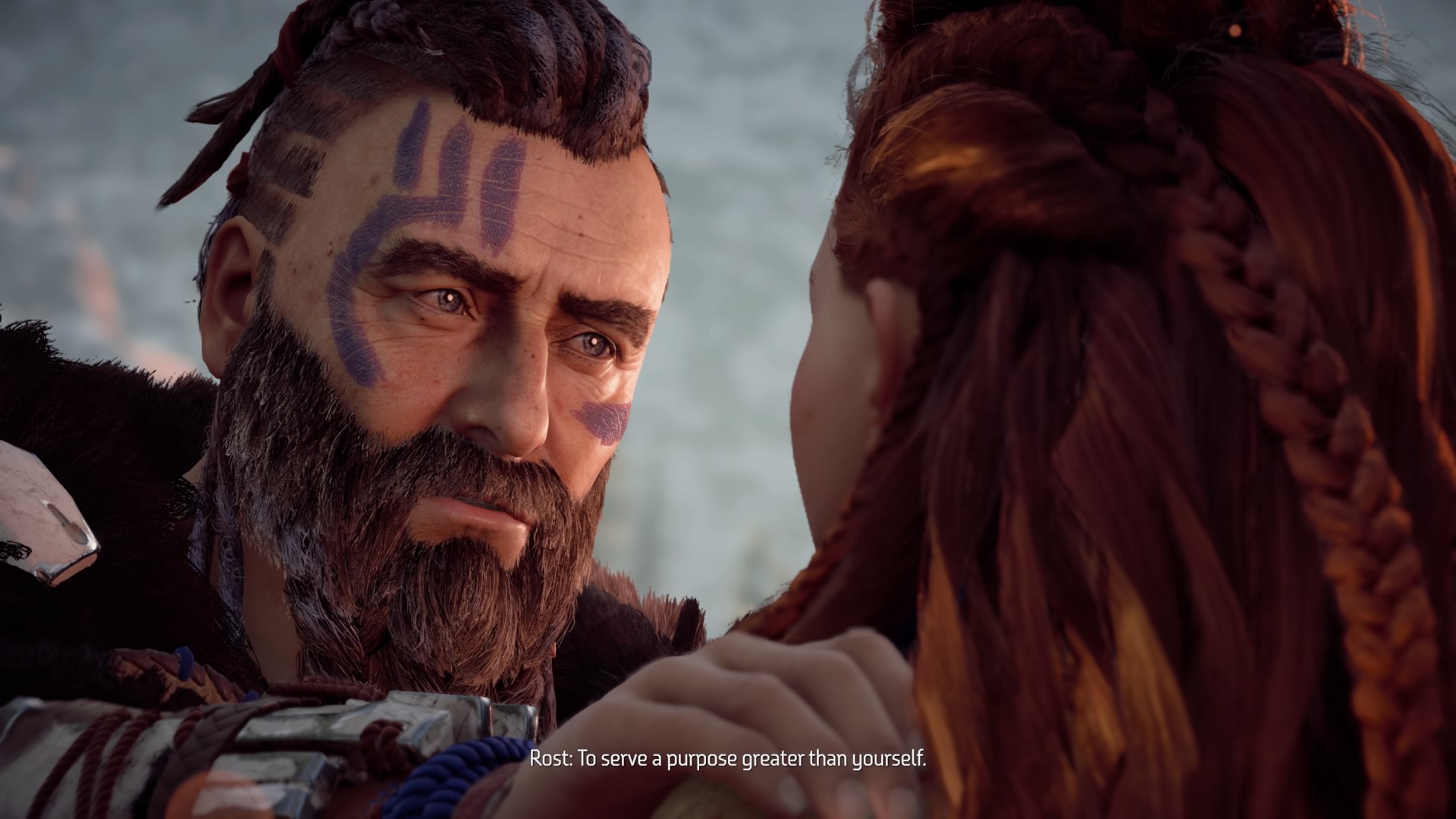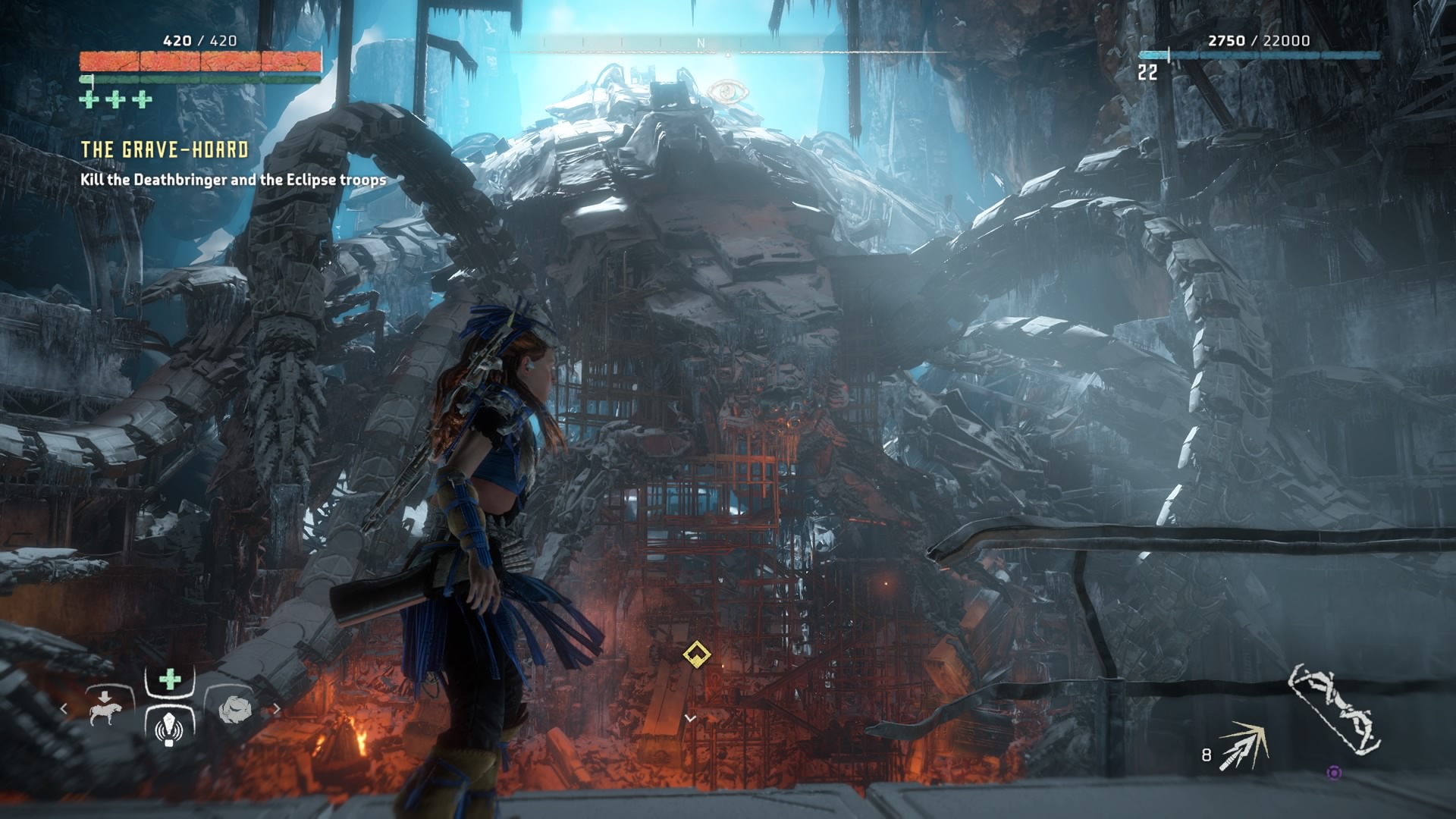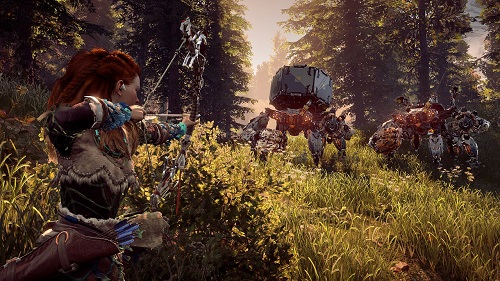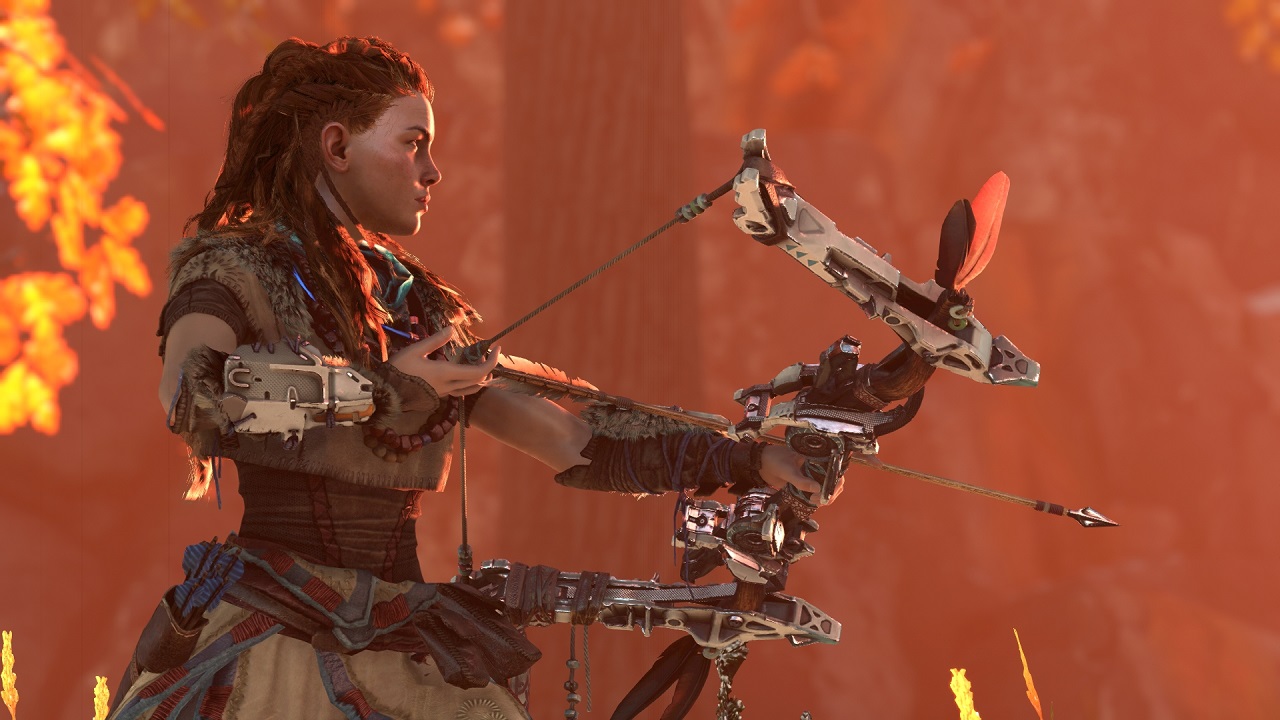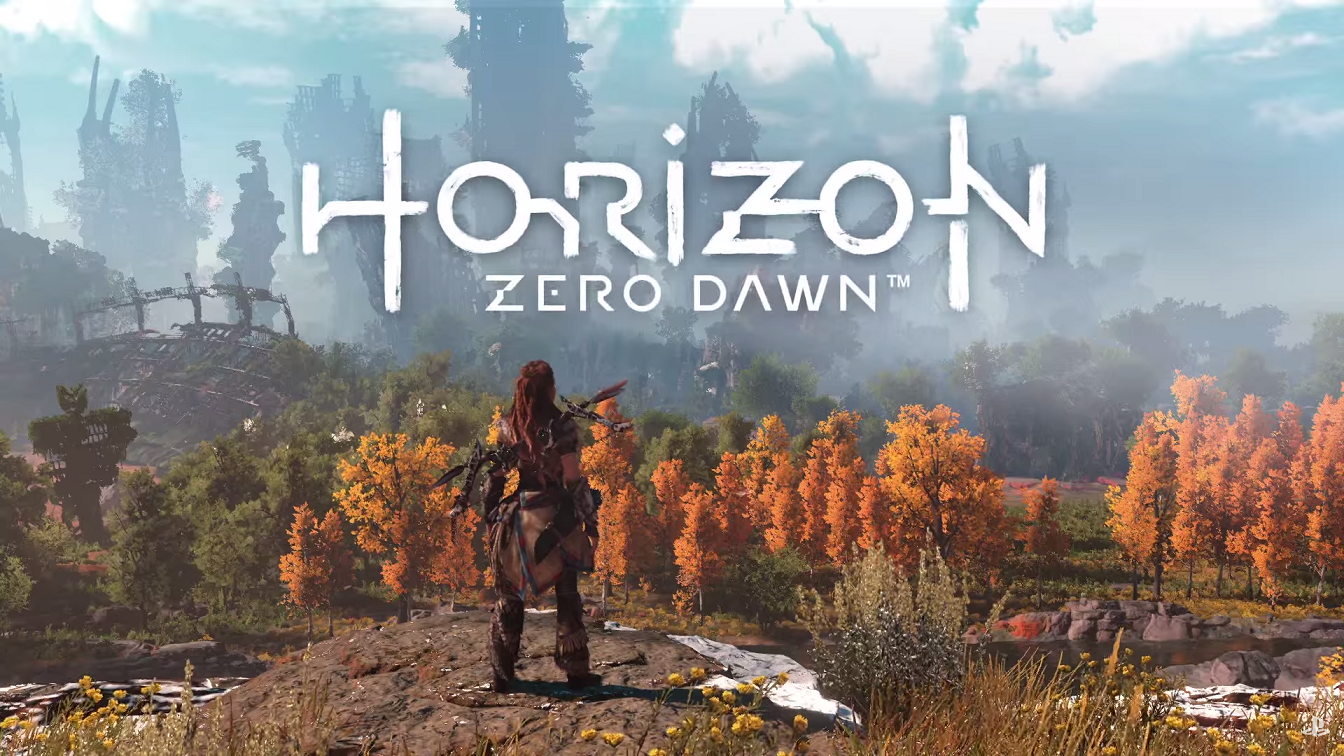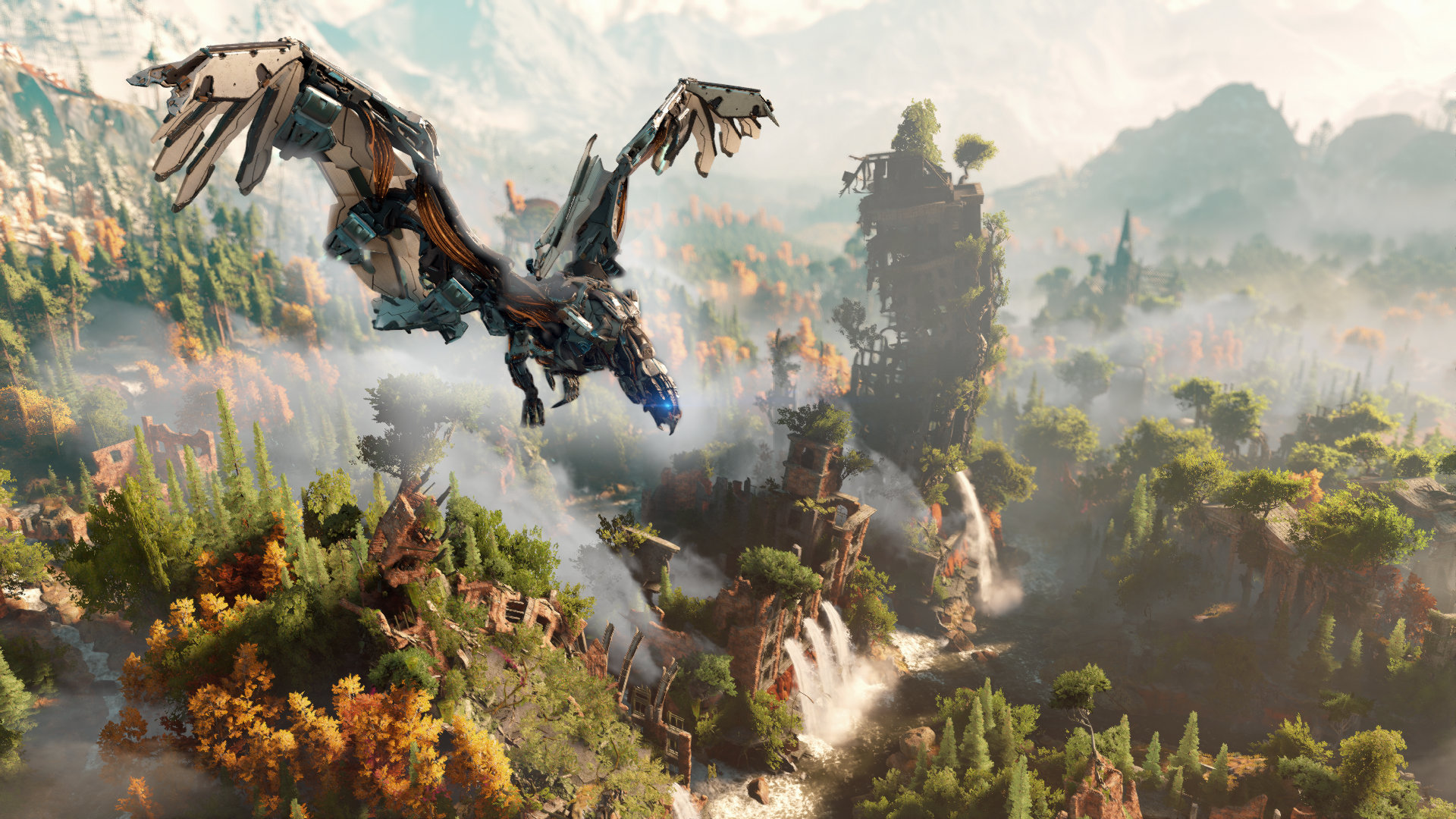
Guerrilla Games has been nurturing Horizon Zero Dawn for quite a while, half a decade in fact. As the Killzone series met its natural conclusion with Killzone 3 and failed to re-start itself with Killzone: Shadow Fall, the team focused on a new direction. And in many ways, Horizon Zero Dawn feels like a much more mature game out of the developers. While Killzone at times tried to portray a morally grey universe, it too often fell into the glorified kill-crazy shoot-ups that define most modern FPS games. Horizon Zero Dawn is refreshing, as it takes an entirely different approach that is also deeply ingrained in every aspect of the production. It’s a huge get as an exclusive for PlayStation 4, and an exciting new universe for Guerrilla to play in.
Horizon takes place a millennium after human civilisation has fallen. While our ruins dot the landscape, our species has survived in primitive tribes and settlements, resembling many periods from Earth’s history from the stone age, to the Vikings and Medieval era. Aloy, the game’s protagonist, is an orphan, outcast at birth by the matriarchal ‘Nora’ tribe and forced to learn survival skills from an early age. This is especially important in Horizon’s world, as rather than horses, moose and deer, robotic animal-like creatures roam the environment – at one time peaceful, but suddenly slowly becoming ‘corrupted’ by a sinister influence. Aloy’s journey takes her from outcast to hero, as she seeks to learn the truth about her family, prove herself to the Nora, explore the world and learn the secret behind the Corruption.
There is no shortage of post-apocalyptic titles on the market these days, but games like The Talos Principle and now, Horizon Zero Dawn, stand out among the crowd by handling the scenario in unique and interesting ways. While the threat of ancient technology is a major part of the story, the inhabitants of Horizon‘s cultures don’t dwell on it. Humanity has evolved in its own unique direction, moved on and cross-pollinated. This future world looks like a mix between many influences, from Mayan to European to Japanese, and while it doesn’t always quite work, I have to admire the work gone into the many designs in imagining a culture born of the blending of every other on Earth.
It also helps that the game generally looks fantastic. There’s a large variety of environments to explore, from snowy mountains to desert plateaus, giant lakes and forested hunting paths. Character models are extremely detailed, especially for the game’s central characters. The only problem with graphics reaching this kind of fidelity is that it invites harder examination by us, the viewers. When faces are modeled exceptionally realistically, but barely any animation is given to them (generally because its an insignificant dialogue scene), it can come off as creepy. Also, there’s something about child Aloy’s face that is the stuff of nightmares.
The most obvious comparisons the game invites are to The Witcher series, as Aloy journeys from town to town, following a ‘main quest’ storyline but also taking on side quests to hunt down larger robots, or agreeing to ‘errands’ (fetch-quests). Aloy can converse with Witcher-esque dialogue trees, make moral decisions (although these don’t seem to have quite the same weight or consequence as that series), and even has her own version of Geralt’s senses with her ‘Focus’ device, which allows her to track enemies and analyse weaknesses. There are also ‘corrupted zones’ full of tough robots and ‘bandit camps’ to clear, special ‘Cauldron’ dungeons to discover and explore, and the graceful Diplodocus-like ‘Tallneck’ robots to scale and hack, to uncover more secrets. The game’s map is filled to the brim with missions, hunting areas and more – while it isn’t necessarily the biggest map I’ve ever seen, it goes to show that bigger isn’t always better, as long as you fill it with well designed content.
Horizon’s sci-fi scenario, while intriguing, seems to also have been devised to focus on the game’s real themes of tactical hunting and survival, as part of a food chain where you’re not necessarily at the top. The robots carry vital components needed for currency and crafting, which means hunting them is a necessity. Every robot creature has its own unique weaknesses and behaviors, and unlike The Witcher where there may be one specific weakness to focus on, Horizon often presents you with many more options. While Aloy’s go-to weapons are variations on her trusty bow and arrow, there’s a lot of ways to take down enemies. Her Focus allows Aloy to analyse individual components on Machines, which may be susceptible to armor breaking attacks, or fire arrows, freeze bombs, or a litany of other options. There’s also other tactics to consider – such as luring enemies away into explosive or paralysing traps you craft. Aloy’s spear is also capable of ‘overriding’ enemies, to turn them into allies and potentially upset the balance of an engagement. The trick is that it can only be activated if your target is unaware – meaning that stealth is vital.
The tactical way you have to approach enemies and the huge number of weapons and strategies you can use is what’s really at the heart of Horizon, and where it shines brightest. Melee combat with Aloy’s spear is never really that viable until late-game upgrades, and even then it still feels sloppy. Horizon rewards patience and keen observation, and when it all ‘clicks’ it feels both spectacular and satisfying. The design of the enemies, as well as the combat and general gameplay all tie together in a way that feels genuinely cohesive.
That all said, Horizon has a rough opening few hours. While Aloy’s journey from childhood to adulthood makes for a good basis for a tutorial, it’s also where the game feels slowest and the most punishing if you aren’t on board with its design. Aloy has no permanent mount or means of transportation, but her override ability allows her to take control of several horse-like robots. This does mean that if you need to get somewhere in a hurry, you’ll first have to commit to finding a herd of these machines and stealthing around them to find one to recruit. As mounts can be destroyed or left behind, you may find yourself doing this a fair bit – especially as fast travel is only allowed between activated ‘bonfires’ you find around the map, and fast travel is an expendable resource. Later in the game, these issues are lessened or eliminated completely, so I would encourage anyone put off by this to stick with Horizon beyond its opening section.
Horizon Zero Dawn essentially forms the beginnings of Sony’s own exclusive Witcher series, which given that franchise’s quality and the fact it’s on hiatus, is no bad thing at all. Fans of Geralt’s adventures will have no problem adapting to Aloy, especially thanks to the challenge the game’s bestiary brings in its best moments. A close release window has led some to compare The Legend of Zelda and Horizon, but it’s not really a fair comparison at all, and those coming to Horizon for that type of immediately rewarding, fun RPG may be disappointed. Horizon is at its best when it throws you into the deep end, and forces you to prepare intelligently for an encounter, act tactically and adapt as the situation changes. In both its themes and gameplay, it’s the most mature game Guerrilla has produced yet, and certainly a bright dawn for hopefully a long-lasting new series.
-Tons of quests, side quests, content -Amazing visuals -Unique future world and design -Deep and strategic hunting mechanics
-Sloppy melee combat -Average opening hours

